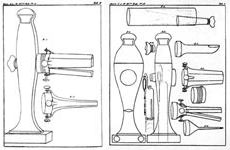|
Ioan Pușcaș
Ioan Puşcaş (10 July 1932 – 4 April 2015) was a Romanian gastroenterologist, born in Treznea, Sălaj.(16 September 2007)Un mare medic: Dr. Ioan Puscas la 75 de ani, ''Revista Noi, NU!'' In the 1970s, he proposed the use of carbonic anhydrase (CA) inhibitor acetazolamide to heal peptic ulcers.(25 November 2010)Centrul medical al doctorului Ioan Puşcaş va fi închis ''Adevărul'' (in Romanian)Treatment of Gastroduodenal Ulcers with Carbonic Anhydrase Inhibitors Annals of the New York Academy of Sciences, Volume 429 (June 1984) In 1962, he became a medicine practitioner in , then transferred, on request, to the [...More Info...] [...Related Items...] OR: [Wikipedia] [Google] [Baidu] |
Gastroenterology
Gastroenterology (from the Greek gastḗr- "belly", -énteron "intestine", and -logía "study of") is the branch of medicine focused on the digestive system and its disorders. The digestive system consists of the gastrointestinal tract, sometimes referred to as the ''GI tract,'' which includes the esophagus, stomach, small intestine and large intestine as well as the accessory organs of digestion which include the pancreas, gallbladder, and liver. The digestive system functions to move material through the GI tract via peristalsis, break down that material via digestion, absorb nutrients for use throughout the body, and remove waste from the body via defecation. Physicians who specialize in the medical specialty of gastroenterology are called gastroenterologists or sometimes ''GI doctors''. Some of the most common conditions managed by gastroenterologists include gastroesophageal reflux disease, gastrointestinal bleeding, irritable bowel syndrome, inflammatory bowel disease (IBD ... [...More Info...] [...Related Items...] OR: [Wikipedia] [Google] [Baidu] |
Gastric Ulcer
Peptic ulcer disease is when the inner part of the stomach's gastric mucosa (lining of the stomach), the first part of the small intestine, or sometimes the lower esophagus, gets damaged. An ulcer in the stomach is called a gastric ulcer, while one in the first part of the intestines is a duodenal ulcer. The most common symptoms of a duodenal ulcer are waking at night with upper abdominal pain, and upper abdominal pain that improves with eating. With a gastric ulcer, the pain may worsen with eating. The pain is often described as a burning or dull ache. Other symptoms include belching, vomiting, weight loss, or poor appetite. About a third of older people with peptic ulcers have no symptoms. Complications may include bleeding, perforation, and blockage of the stomach. Bleeding occurs in as many as 15% of cases. Common causes include infection with ''Helicobacter pylori'' and non-steroidal anti-inflammatory drugs (NSAIDs). Other, less common causes include tobacco smoking, str ... [...More Info...] [...Related Items...] OR: [Wikipedia] [Google] [Baidu] |
Gastroenterologists
Gastroenterology (from the Greek gastḗr- "belly", -énteron "intestine", and -logía "study of") is the branch of medicine focused on the digestive system and its disorders. The digestive system consists of the gastrointestinal tract, sometimes referred to as the ''GI tract,'' which includes the esophagus, stomach, small intestine and large intestine as well as the accessory organs of digestion which include the pancreas, gallbladder, and liver. The digestive system functions to move material through the GI tract via peristalsis, break down that material via digestion, absorb nutrients for use throughout the body, and remove waste from the body via defecation. Physicians who specialize in the medical specialty of gastroenterology are called gastroenterologists or sometimes ''GI doctors''. Some of the most common conditions managed by gastroenterologists include gastroesophageal reflux disease, gastrointestinal bleeding, irritable bowel syndrome, inflammatory bowel disease (IBD ... [...More Info...] [...Related Items...] OR: [Wikipedia] [Google] [Baidu] |
2015 Deaths
This is a list of lists of deaths of notable people, organized by year. New deaths articles are added to their respective month (e.g., Deaths in ) and then linked below. 2025 2024 2023 2022 2021 2020 2019 2018 2017 2016 2015 2014 2013 2012 2011 2010 2009 2008 2007 2006 2005 2004 2003 2002 2001 2000 1999 1998 1997 1996 1995 1994 1993 1992 1991 1990 1989 1988 1987 1986 Earlier years ''Deaths in years earlier than this can usually be found in the main articles of the years.'' See also * Lists of deaths by day * Deaths by year (category) {{DEFAULTSORT:deaths by year ... [...More Info...] [...Related Items...] OR: [Wikipedia] [Google] [Baidu] |
1932 Births
Events January * January 4 – The British authorities in India arrest and intern Mahatma Gandhi and Vallabhbhai Patel. * January 9 – Sakuradamon Incident (1932), Sakuradamon Incident: Korean nationalist Lee Bong-chang fails in his effort to assassinate Emperor Hirohito of Japan. The Kuomintang's official newspaper runs an editorial expressing regret that the attempt failed, which is used by the Japanese as a pretext to attack Shanghai later in the month. * January 22 – The 1932 Salvadoran peasant uprising begins; it is suppressed by the government of Maximiliano Hernández Martínez. * January 24 – Marshal Pietro Badoglio declares the end of Libyan resistance. * January 26 – British submarine aircraft carrier sinks with the loss of all 60 onboard on exercise in Lyme Bay in the English Channel. * January 28 – January 28 incident: Conflict between Japan and China in Shanghai. * January 31 – Japanese warships arrive in Nanking. February * February 2 ** A general ... [...More Info...] [...Related Items...] OR: [Wikipedia] [Google] [Baidu] |
Șimleu Silvaniei
Șimleu Silvaniei (; , ) is a town in Sălaj County, Crișana, Romania with a population of 13,948 people (2021 census). It is located near the ancient Dacian fortress Dacidava. Three villages are administered by the town: Bic (''Bükk''), Cehei (''Somlyócsehi''), and Pusta (''Csehipuszta''). History Ancient times Before the Roman conquest of Dacia, Șimleu was a political, social and administrative Dacians, Dacian centre, of high importance. Seven Dacian fortresses, some with associated settlements, were arranged in an arc shape around the hills of Șimleu. They had a strategic role in supervising the trade along the salt road coming from areas around Napoca (ancient city), Napoca, Potaissa, and modern Dej, and heading to Pannonia. The centre of an early ''Gepidia'', on the plains northwest of the Meseș Mountains, appears to have been located around Șimleu Silvaniei, where early 5th-century precious objects of Roman provenance have been unearthed. Middle Ages The to ... [...More Info...] [...Related Items...] OR: [Wikipedia] [Google] [Baidu] |
Endoscopy
An endoscopy is a procedure used in medicine to look inside the body. The endoscopy procedure uses an endoscope to examine the interior of a hollow organ or cavity of the body. Unlike many other medical imaging techniques, endoscopes are inserted directly into the organ. There are many types of endoscopies. Depending on the site in the body and type of procedure, an endoscopy may be performed by a doctor or a surgeon. During the procedure, a patient may be fully conscious or anaesthesia, anaesthetised. Most often, the term ''endoscopy'' is used to refer to an examination of the upper part of the human gastrointestinal tract, gastrointestinal tract, known as an esophagogastroduodenoscopy. Similar instruments are called borescopes for nonmedical use. History Adolf Kussmaul was fascinated by sword swallowers who would insert a sword down their throat without gagging. This drew inspiration to insert a hollow tube for observation; the next problem to solve was how to shine light th ... [...More Info...] [...Related Items...] OR: [Wikipedia] [Google] [Baidu] |
Treznea
Treznea (, lit. "The Devil's Fountain"; ) is a commune in Sălaj County, Crișana, Romania. It is composed of two villages, Bozna (''Szentpéterfalva'') and Treznea. These were part of Agrij Commune until 1995, when they were split off to form a separate commune. Geography The commune is situated in the foothills of the Meseș Mountains, at an altitude of , on the banks of the river Treznea. It is located in the central-south part of Sălaj County, at a distance of from the county seat, Zalău. Treznea is crossed by county road DJ108R, which starts in Agrij and ends in a few miles in (part of European route E81), a road which connects Cluj-Napoca to Zalău, and continues to the Hungarian border near Carei. History The commune is the site of the Treznea massacre, which occurred on September 9, 1940, during the handing over of Northern Transylvania from Romania to Hungary, pursuant to the Second Vienna Award. The massacre, in which 87 ethnic Romanians and 6 Jews were kil ... [...More Info...] [...Related Items...] OR: [Wikipedia] [Google] [Baidu] |
Oradea
Oradea (, , ; ; ) is a city in Romania, located in the Crișana region. It serves as the administrative county seat, seat of Bihor County and an economic, social, and cultural hub in northwestern Romania. The city lies between rolling hills on the Crișana plain, on both banks of the Crișul Repede river. The city lies about from the Hungarian border. Oradea is Romania's List of cities and towns in Romania, ninth most populous city (as of 2021 Romanian census, 2021). It covers between the Apuseni Mountains and the Crișana-Banat plain. Oradea is known for its high standard of living and is frequently ranked among Romania's most liveable cities. It is the region's major industrial and economic hub, and hosts several of the country's major industrial enterprises. The city is also renowned for its striking Art Nouveau architecture and is a member of the Réseau Art Nouveau Network and the Art Nouveau European Route. Etymology The Romanian name ''Oradea'' originates from the cit ... [...More Info...] [...Related Items...] OR: [Wikipedia] [Google] [Baidu] |




